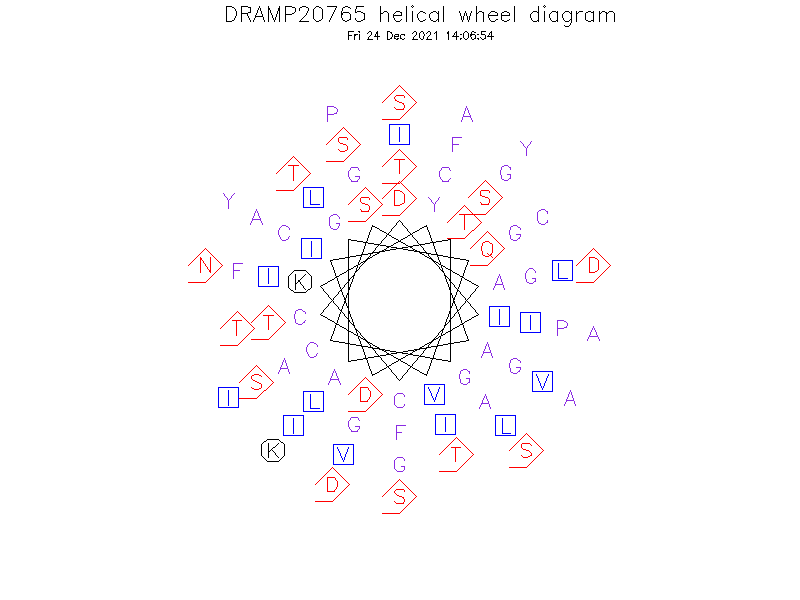General Information
-
DRAMP ID
- DRAMP20765
-
Peptide Name
- Halocin A4 (HalA4, Halocin-A4, Halocin U1; Microhalocins, Archaeocin, Bacteriocin, Archaea, Euryarchaeota, Prokaryotes)
-
Source
- Haloarchaeon strain TuA4
-
Family
- Not found
-
Gene
- Not found
-
Sequence
- DIDITGCSACKYAAGQVCTIGCSAAGGFICGLLGITIPVAGLSSLGFFVITCTTSADYYSIPDSNAAK
-
Sequence Length
- 68
-
UniProt Entry
- No entry found
-
Protein Existence
- Protein level
Activity Information
-
Biological Activity
- Antimicrobial, Antibacterial
-
Target Organism
-
- [Ref.11114928] Archaea: Sulfolobus solfataricus (Inhibition Zone=12mm)
-
Hemolytic Activity
-
- No hemolysis information or data found in the reference(s) presented in this entry
-
Cytotoxicity
-
- Not included yet
-
Binding Target
- Not found
Structure Information
-
Linear/Cyclic
- Not included yet
-
N-terminal Modification
- Not included yet
-
C-terminal Modification
- Not included yet
-
Nonterminal Modifications and Unusual Amino Acids
- Not included yet
-
Stereochemistry
- Not included yet
-
Structure
- Not found
-
Structure Description
- Not found
-
Helical Wheel Diagram
-
PDB ID
- None
-
Predicted Structure
- There is no predicted structure for DRAMP20765.
Physicochemical Information
-
Formula
- C296H466N72O95S6
Absent Amino Acids
- EHMRW
Common Amino Acids
- AGI
Mass
- 6745.74
PI
- 4.14
Basic Residues
- 2
Acidic Residues
- 4
Hydrophobic Residues
- 29
Net Charge
- -2
-
Boman Index
- -0.22
Hydrophobicity
- 0.008
Aliphatic Index
- 94.85
Half Life
-
- Mammalian:1.1 hour
- Yeast:3 min
- E.coli:>10 hour
Extinction Coefficient Cystines
- 4845
Absorbance 280nm
- 72.31
Polar Residues
- 33
DRAMP20765

Comments Information
Function
- TuA4 cell lysates are not toxic for S. solfataricus, and protease (but not nuclease) treatment of the halocin A4 preparation inactivated toxicity, indicating that the A4 toxic factor must be a secreted protein.
Literature Information
- ·Literature 1
-
Title
- Secreted euryarchaeal microhalocins kill hyperthermophilic crenarchaea.
-
Pubmed ID
- 11114928
-
Reference
- J Bacteriol. 2001 Jan;183(1):287-91.
-
Author
- Haseltine C, Hill T, Montalvo-Rodriguez R, Kemper SK, Shand RF, Blum P.

